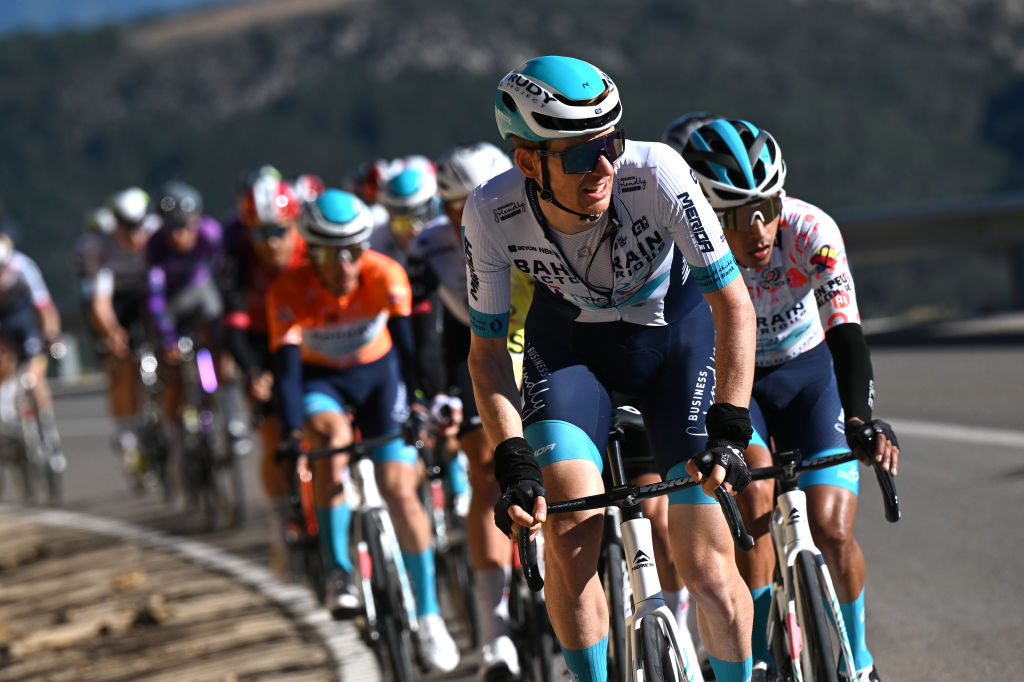Retro: The 1950 Tour de France and the forgotten first African team
North Africa's two stage wins overshadowed in history by Abdel-Kader Zaaf's travails
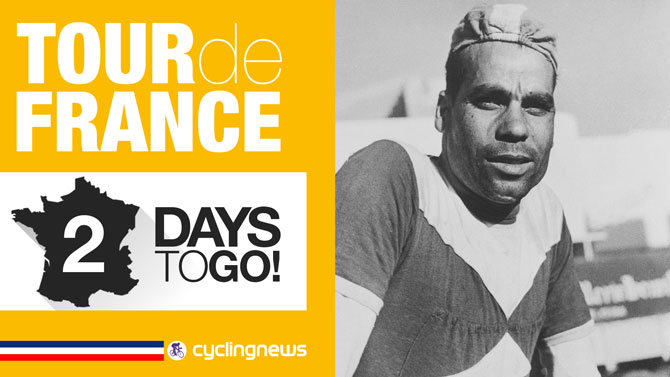
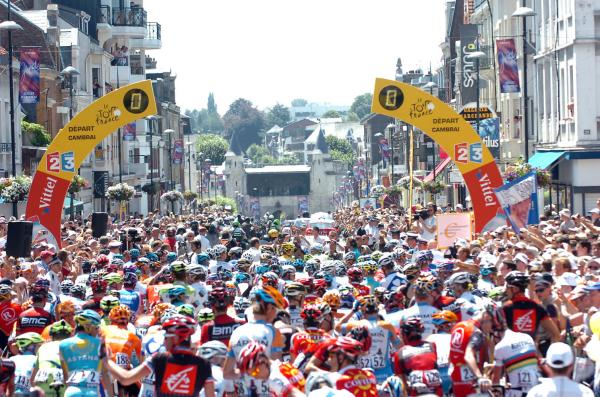

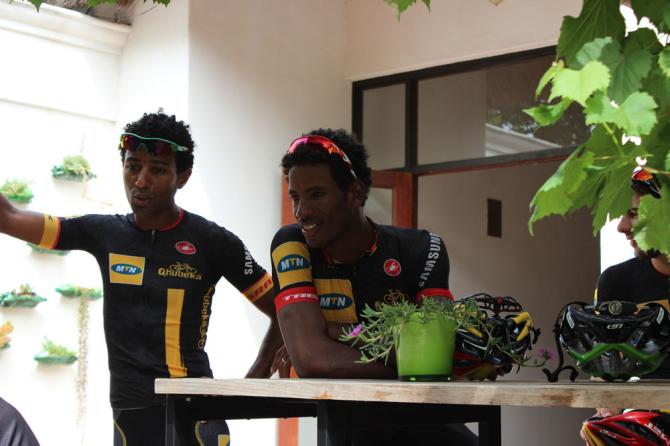
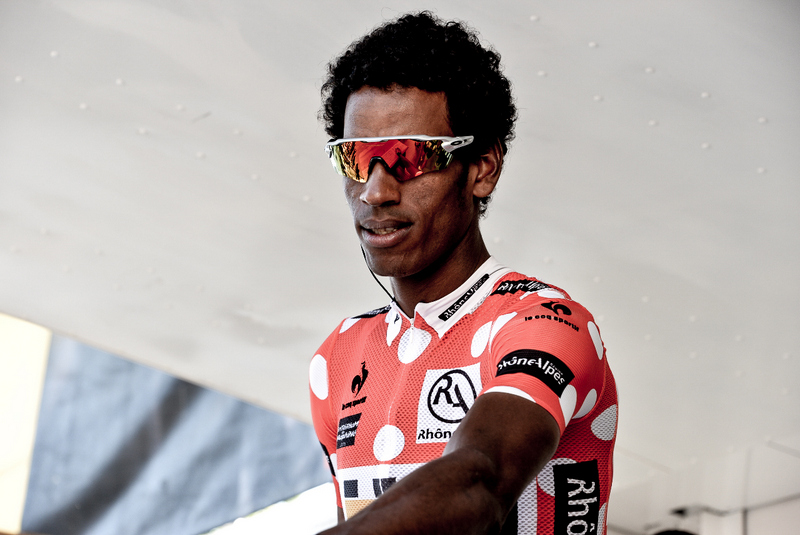
In the six months since ASO confirmed its wildcard invitations to the Tour de France, it has been repeated the world over that MTN-Qhubeka will become the first African team to participate in the race. Even MTN-Qhubeka's own press release announcing its Tour line-up rehashed the same mistaken assertion, describing itself as the "first-ever African team to ride the Grande Boucle."
Doug Ryder: MTN-Qhubeka is destined for greatness
Five Africans named in MTN-Qhubeka Tour de France team
Video: The five key stages of the Tour de France
Oleg Tinkov blog: I'm ready to boycott the Tour de France in 2016
Gallery: MTN-Qhubeka unveil new bike for Tour de France
Doug Ryder's squad can, of course, lay claim to its own, deeply significant piece of Tour history, as Eritrea's Merhawi Kudus and Daniel Teklehaimanot will become the first black African riders to take part when they roll down the start ramp in Utrecht on Saturday, but it would be remiss to overlook the fact that the landmark of being the maiden African team in the race was already achieved by another, pioneering squad some 55 years ago.
In the post-war period, the Tour peloton was made up of national and regional teams rather than trade squads and, ahead of the 1950 edition of the race, Algerian journalist Tony Arbona helped to lobby for the inclusion of a North African team, made up of Algerian and Moroccan riders, among the regional outfits designated by Jacques Goddet's organisation.
At the time, northern Morocco was a French colony, while Algeria was still administered as a part of metropolitan France. For over a century, Algeria had been divided into départements as though it were a normal region like Brittany or Provence rather than a land that had been violently annexed in 1830, and so at the 1950 Tour, "North Africa" came to be listed among the French regional teams such as Sud-Est and Île de France – giving rise, perhaps, to its often overlooked place in history.
There had already been African riders in the Tour, of course, with the Tunisian Ali Neffati, who raced in 1913 and 1914, believed to have been the first, and as cycling grew in popularity in the Maghreb through the 1930s and 1940s, other North African riders began to participate, including Algerian Abdel-Kader Zaaf, who raced for the Sud-Est team in 1948, and Custodio Dos Reis of Morocco, who raced for Centre-Sud-Ouest in 1949.
The decision to assemble such riders under the North African banner in 1950 was not simply an acknowledgement of the talent emerging in the region, however, but must also be viewed in the political context of the time, as France – like others in Europe – struggled to hold on to its colonies. In Algeria, the roots of a coherent independence movement began to take hold in the aftermath of the Second World War. Sport in general, and cycling in particular, played their part in late 1940s attempts to reaffirm the country's status as a part of France.
The Tour of Algeria was established in 1949, for instance, aping the Tour itself, and Dutch historian Niek Pas has noted that the new race held the twin purpose of serving as "a 'celebration' of French Algeria" and as a "ritual re-conquest of the North African territory." In that light, the insertion of North Africa among the "regions of France" represented in the Tour peloton the following year seems simply an extension of that thought.
The latest race content, interviews, features, reviews and expert buying guides, direct to your inbox!
The six-man team that lined up in North Africa's light blue jerseys at that year's Tour came from a cross-section of Maghreb society of the time, featuring native Algerians Abdel-Kader Zaaf and Ahmed Kebaili alongside four pieds-noirs, as descendants of the Europeans who had colonised the region were known.
Dos Reis was born in Morocco to a Portuguese family, and the team also included Casablanca-born Max Charroin, as well as Marcel Molines and Marcel Zelasco from Algiers. Their manager, meanwhile, born in Oran but of European origin, was Vincent Salazard, who as a rider had beaten René Vietto to become French independent champion in 1933, and then finished 27th overall at the following year's Tour in the colours of Île-de-France.
The Zaaf incident – and two stage wins
On and off the road, then, there was experience behind the North African sextet that set out on July 13 from Paris, where the honour of waving the start flag for that year's Grand Départ was famously bestowed upon Orson Welles. Yet even though they would proceed to more than justify their presence by landing two stage victories, the North African team's achievements were to be overshadowed by a remarkable incident on the road to Nîmes on stage 13. Not for the first time in the annals of the Tour, the details of history would be obscured by the adornments of legend.
The 1950 Tour was marked by extreme heat, and the canicule peaked as the peloton reached the Mediterranean coast. On the 215km haul from Perpignan to Nîmes, the general classification took a decisive turn as maillot jaune Ferdi Kubler put ten minutes into the stricken French pairing of Raphaël Géminiani and Louison Bobet, though the incident that lives on in Tour folklore involved the two members of the North African team at the head of the race.
Making light of the conditions, Abdel-Kader Zaaf and Marcel Molinès had broken clear after just 15 kilometres of racing and with the peloton seemingly more concerned with raiding bars en route, the Algerian duo established an insurmountable lead. On the approach to Nîmes, however, Zaaf fell victim to what appeared to be a heatstroke, zigzagging across the road and collapsing unconscious beneath a tree. When he came to, he reportedly attempted to ride off the wrong direction, but was swiftly stopped and taken to Nîmes by ambulance.
The tale that quickly passed into Tour lore was that Zaaf's collapse had been triggered by a bottle of wine he had accepted from a spectator in a bid to quench his thirst. As a devout Muslim, the story goes, Zaaf had never drunk alcohol before, and the effect was such as to knock him out. It is worth noting, however, that even Pierre Chany's Fabuleuse Histoire du Tour de France – which, as the title suggests, does not always shy away from airing tall tales – casts doubt upon this explanation. "In reality, if he stank of booze at twenty paces, it was simply because the spectators in this viniculture centre had doused him with red wine to cool him down," Chany wrote.
The competing explanation, reportedly verified by both his North African teammate Ahmed Kebaili and Geminani, was that Zaaf's bout of heatstroke had been caused by amphetamine use, though in an era before doping was recognised as such, the alcohol hypothesis was perhaps considered more salacious.
Certainly, it helped to cement Zaaf's place in Tour lore, particularly given that he compounded the incident by attempting to start the next stage after offering to make up the distance he had covered by ambulance the previous day. "Do you know what he said to me in his naivety?" his roommate Ahmed Kebaili told Algerian newspaper El Watan in 2008. "He said: 'I'm going to go and see Goddet and ask him to let me do those last 40 kilometres.'" Within three days, however, Zaaf was already taking his newfound fame to the criterium circuit in Switzerland, while the Tour peloton laboured in the Alps.
Zaaf's travails had the sorry effect, too, of eclipsing what ought to have been the day's headline news, as Marcel Molinès pressed on to claim the first-ever stage victory by an African rider at the Tour de France, four minutes ahead of Georges Meunier and the maillot jaune Kubler.
In later life, Molinès, who died in 2011, went to live in southern France, riding with the VS Narbonne club well into his 60s. A tribute to Molinès on the club website recounts how his achievement was destined to be neglected by history, recalling his poignant encounter with French television journalist Jean-Paul Olivier at a Festina training camp in nearby Gruissan in the 1990s. Some months previously, Olivier had produced a retrospective piece on Zaaf's collapse on the road to Nîmes in 1950 but neglected to mention Molinès' win. On seeing Olivier seated in the lobby, Molinès didn't hesitate in registering his disappointment. "You didn't honour me!" he protested sadly.
Molinès was not the only member of the North African squad to taste success on that 1950 Tour. 24 hours later, as temperatures continued to soar, Custodio Dos Reis took the win in Toulon, again as part of a two-up African break, with both riders lasting the distance on this occasion. Dos Reis and Zelasco crossed the line together, some 14 minutes clear of the chasers and twenty minutes up on the bunch, at the end of a day that saw most of the peloton pause for a dip in the sea at Saint-Pons-Mures after 74 kilometres. For the second successive stage, a North African victory was upstaged by the day's polemic.
Kebaili
Ultimately, just two of the six North African starters would make it all the way to the finish in Paris, with Dos Reis taking 26th overall, a shade under two hours down on Kubler, while Ahmed Kebaili came home in 40th place at 2:27:16.
The North African selection would return for each of the following two editions, with Kebaili, Zaaf (who would finish the race in 1951) and Zelasco ever-present over the regional team's three participations in the Tour. Indeed, when the North African experiment was discontinued after 1952, Kebaili and Zelasco would go on to line up in two further Tours for the Sud-Est squad. Inevitably, however, Algeria's political turbulence would bring a halt to the nation's relationship with the Tour by the end of the decade.
Kebaili's personal story, in particular, seems indivisible from the tortured history of his nation. In 1946, he was the lone Algerian to participate in the amateur French championships in Besançon, and he would go on to participate in five Tours during his professional career. Yet as the 1950s progressed, so too did his involvement in the armed Algerian liberation movement, specifically the Comité Révolutionnaire d'Unité Algérienne, or CRUA, the forerunner to the FLN.
On one occasion following the beginning of the Algerian War in 1954, his sporting fame helped him to evade arrest as he drove with the revolutionary leader Amar Ouamrane as a passenger near Mitidja. "Coming up to a military blockade, Ouamrane told me to drive through it but I hesitated and I did well," Kebaili said. "The soldiers recognised me when I slowed down and we talked about my cycling performances. Naturally, they allowed us to pass, almost with honours."
Kebaili would be less fortunate when he was halted near Blida in July 1955, just a year after his final Tour. He would spend the next five years in prison, where he learned Arabic from his cellmate, the poet Moufdi Zakaria. In 1962, two years after his release from prison, Algeria was granted its independence from France, but it would take decades for local cycling to begin to recover from the conflict.
The Tour of Algeria was suspended altogether from 1954 to 1969, and only appeared sporadically in the years that followed its return. While a number of riders of North African ancestry have appeared in the Tour de France peloton since, Kebaili's 1954 appearance remains the last by an Algerian in the race.
Yet while the golden age of Algerian cycling, the era of Zaaf, Molinès and Kebaili, may never be repeated, there have been encouraging signs in recent years. The Tour of Algeria has returned in a stable format since 2011, while Algeria's Youcef Reguigui showcased his talent by landing overall victory at the Tour de Langkawi this season. Though he will not ride La Grande Boucle this time around, he will remain hopeful of bridging the long gap to Kebaili in the years to come.
Reguigui's team, incidentally, is MTN-Qhubeka. Not the first African team in the Tour de France after all, but, one hopes, a worthy keeper of the flame nonetheless.
The North African team from the 1950 Tour de France:
Max Charroin. (Born Casablanca, Morocco, 1924. Died Fronton, France, 2007.) Abandoned 1950 Tour on stage 5. Two Tour participations in total.
Custodio Dos Reis. (Born Rabat, Morocco, 1931. Died 1959.) 26th overall at 1950 Tour and winner of stage 14. Two Tour participations in total.
Marcel Molinès. (Born Algiers, Algeria, 1928. Died Marseille, France, 2011.) Abandoned 1950 Tour on stage 18. Winner stage 13.
Ahmed Kebaili. (Born Blida, Algeria, 1925. Died, Blida, Algeria, 2013.) 40th overall in 1950 Tour. Five Tour participations in total.
Abdel-Kader Zaaf. (Born Chebli, Algeria, 1917. Died Algiers, Algeria, 1986.) Abandoned 1950 Tour on stage 13. Four Tour participations in total.
Marcel Zelasco. (Born Algiers, Algeria, 1924. Died Toulon, France, 2002.) Abandoned 1950 Tour on stage 18. Four Tour participations in total.

Barry Ryan was Head of Features at Cyclingnews. He has covered professional cycling since 2010, reporting from the Tour de France, Giro d’Italia and events from Argentina to Japan. His writing has appeared in The Independent, Procycling and Cycling Plus. He is the author of The Ascent: Sean Kelly, Stephen Roche and the Rise of Irish Cycling’s Golden Generation, published by Gill Books.
